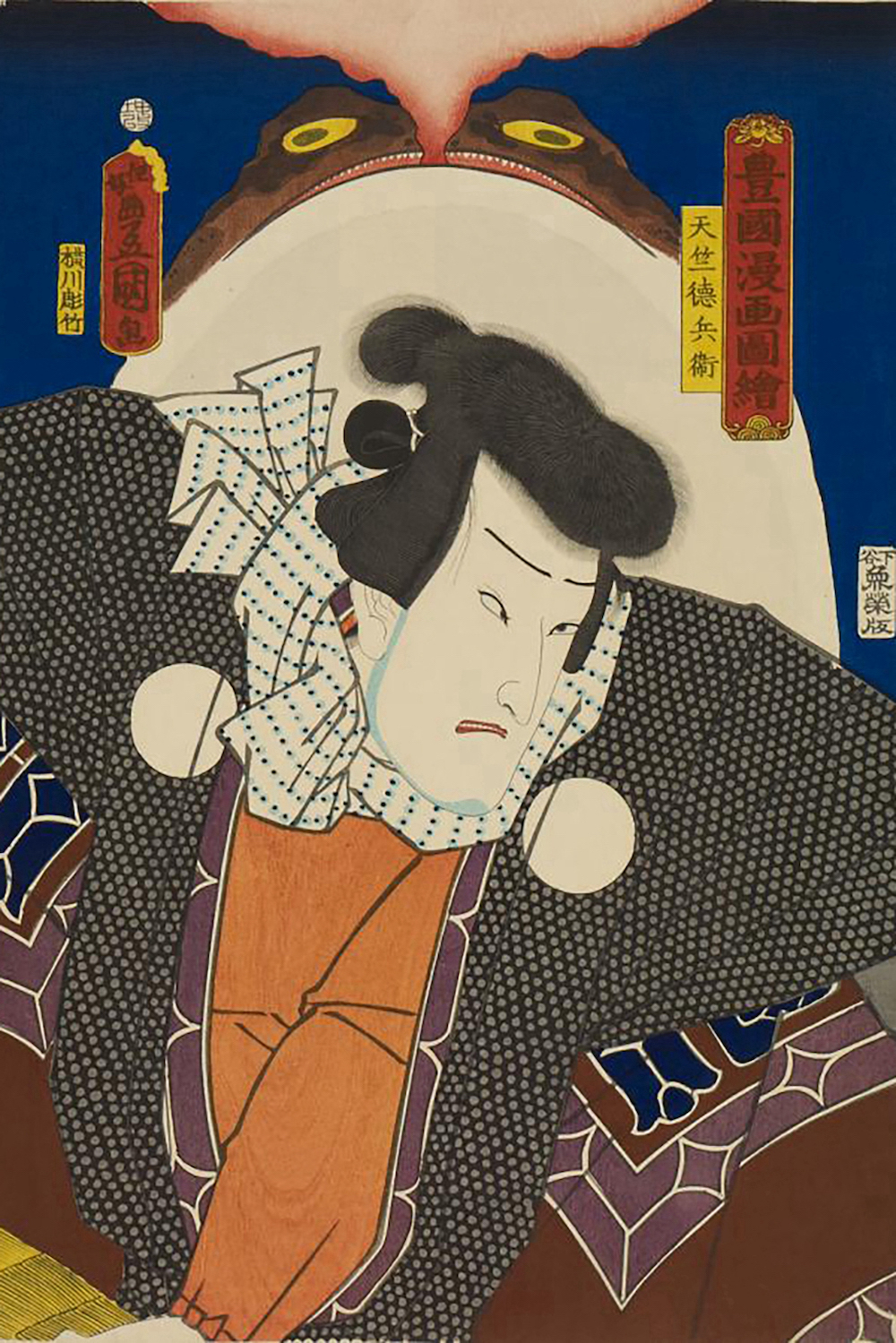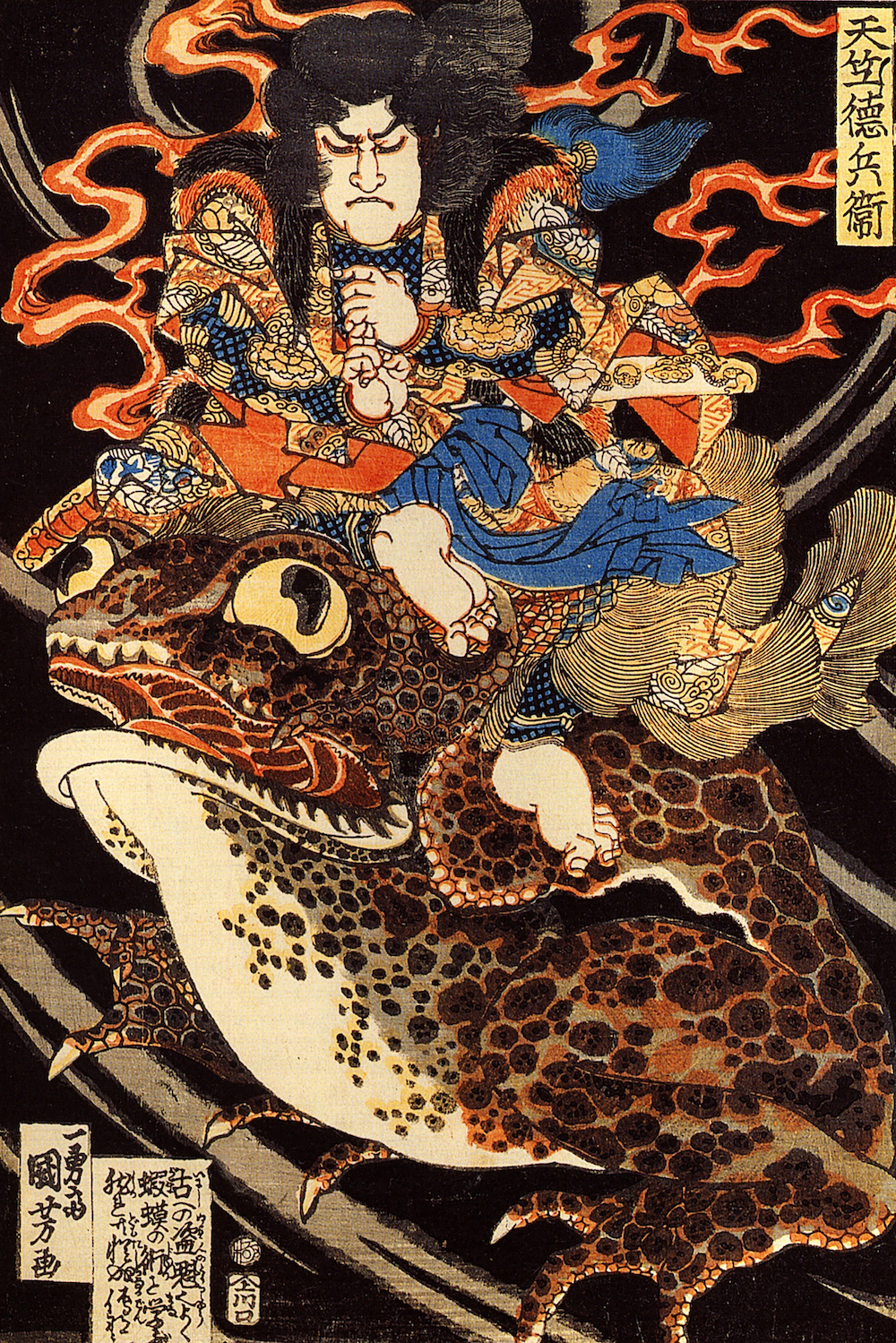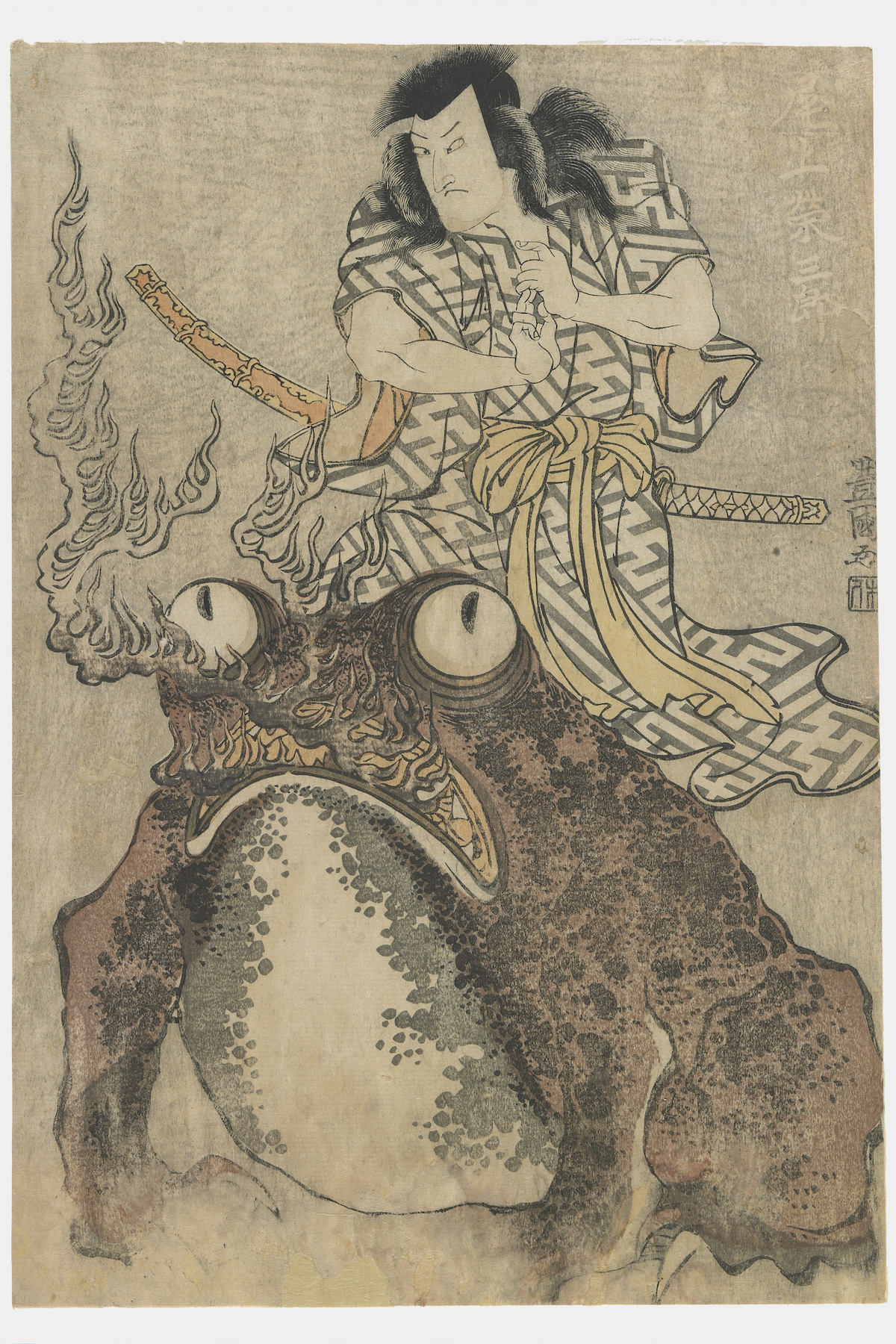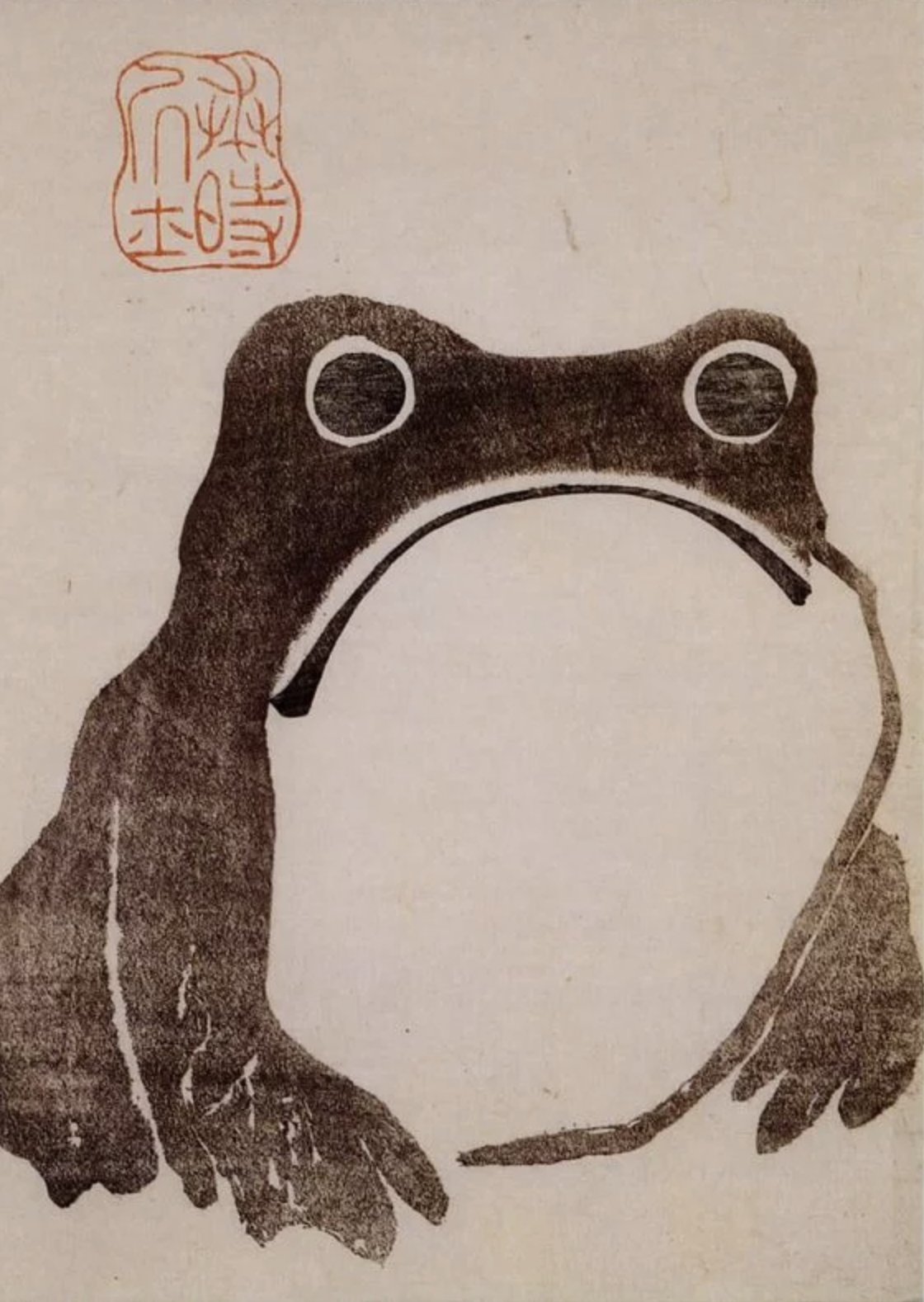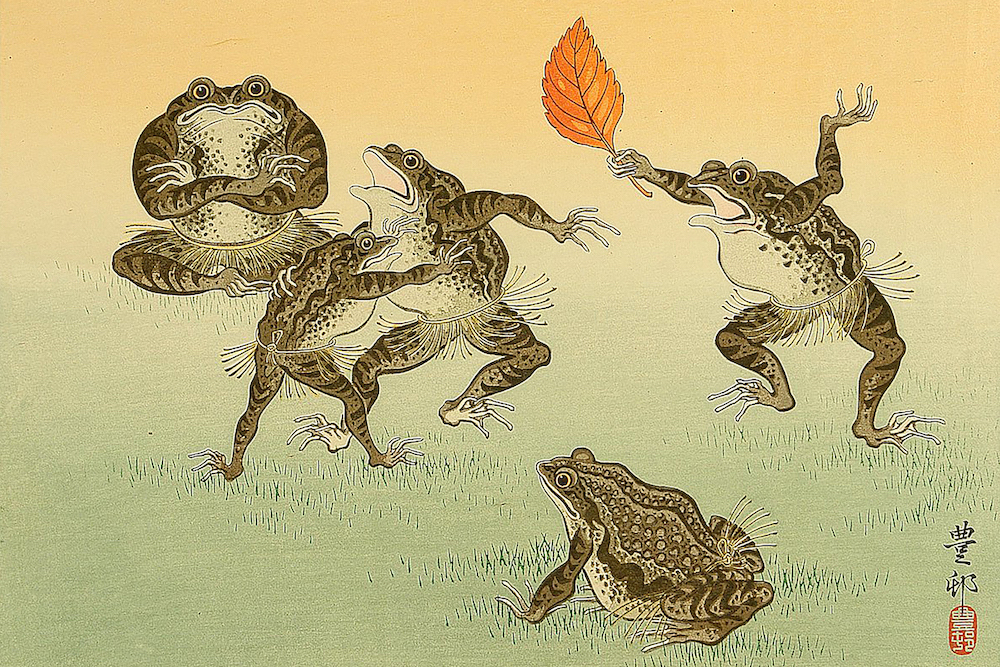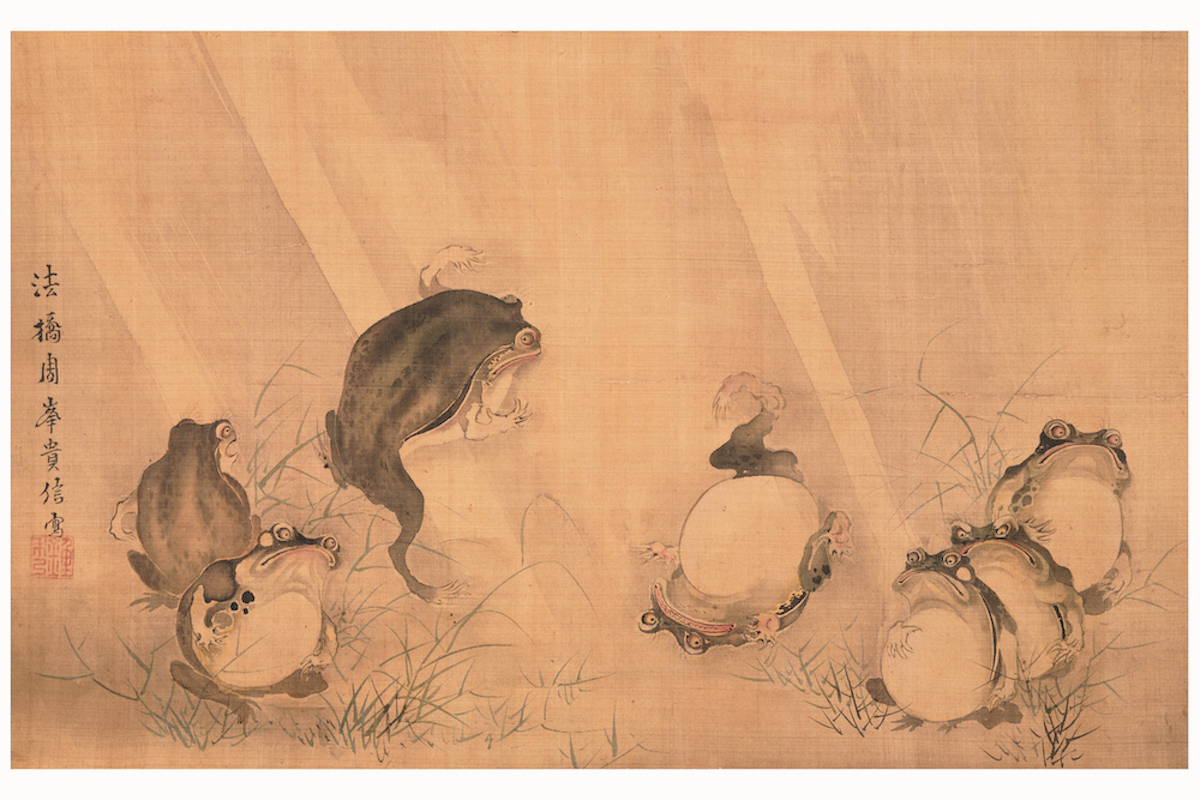The Japanese phrase kimo-kawaii translates into ‘cute and ugly’. It can be applied to frogs and toads, often portrayed in Japanese art in anthropomorphic fashion as they engage in fighting, marching with spirits (yokai) and casting spells. Here we look at a range of prints featuring toads and frogs from Japanese art.
The Legend of Tenjiku Tokubei and his Frog Army
Tenjiku Tokubei (1612- 1692) was an adventurer who traveled extensively in China, Siam (Thailand) and India at a time when most Japanese were not allowed to leave their country.
In 1804, Tokubei’s life was the subject of the kabuki play Tenjiku Tokubei Kokubanashi. In it, Tokubei was portrayed as a master of magic able to cast spells on the large stones used to make pickled vegetables, transforming them into giant toads that attacked his enemies.

Actor Onoe Tamizô II as Tenjiku Tokubei Artist Utagawa Kunisada I (Toyokuni III) (Japanese, 1786–1864), Publisher Kawaguchiya Uhei (Fukusendô) (Japanese) 1841 (Tenpô 12), 7th month.
The Jiraiya
The hit show about Tenjiku Tokubei influenced the writer Kanwatei Onitake (1760-1818), who merged Tokubei’s method of attack and with tales of a legendary Chinese thief to create the Jiraiya, a ninja who conjures up giant phantom frogs to do his bidding.
Jiraiya (自来也 or 児雷也, literally “Young Thunder”) stars in the Japanese folk tale Katakiuchi Kidan Jiraiya Monogatari (報仇奇談自来也説話, The Tale of the Gallant Jiraiya). The story was originally a Yomihon first published in 1806 and was adapted into a serialised novel published in 43 instalments from 1839 to 1868.
One of its illustrators was woodblock artist Kunisada. Kawatake Mokuami then wrote a kabuki drama based on the first ten parts of the novel, which premiered in Edo in 1852, starring Ichikawa Danjūrō VIII in the leading role. Since then the story has been adapted into, several films, video games, and manga and has also influenced various other works.
Artist-unknown-Japanese.jpeg)
Toad Magic (with invisible ink) – 蝦蟇の妖術(あぶりだし絵、透明インク. Artist unknown, Japanese
Jiraiya The Brave (1921).
Jiraiya the Brave is a 1921 Japanese silent trick film directed by Shōzō Makino. The film is also known as Gōketsu Jiraiya (豪傑児雷也, original title). Check out the frog versus-samurai battle at 12 minutes.
Matsumoto Hoji & Grumpy Frog
Another frog artist of note is 19th Century artist Matsumoto Hoji, of whom little is known. He did leave us with arguably the greatest frog woodblock (above), which was originally included in the Meika Gafu, a compendium of famous and popular artworks produced in the late Edo period around the turn of the 19th century.
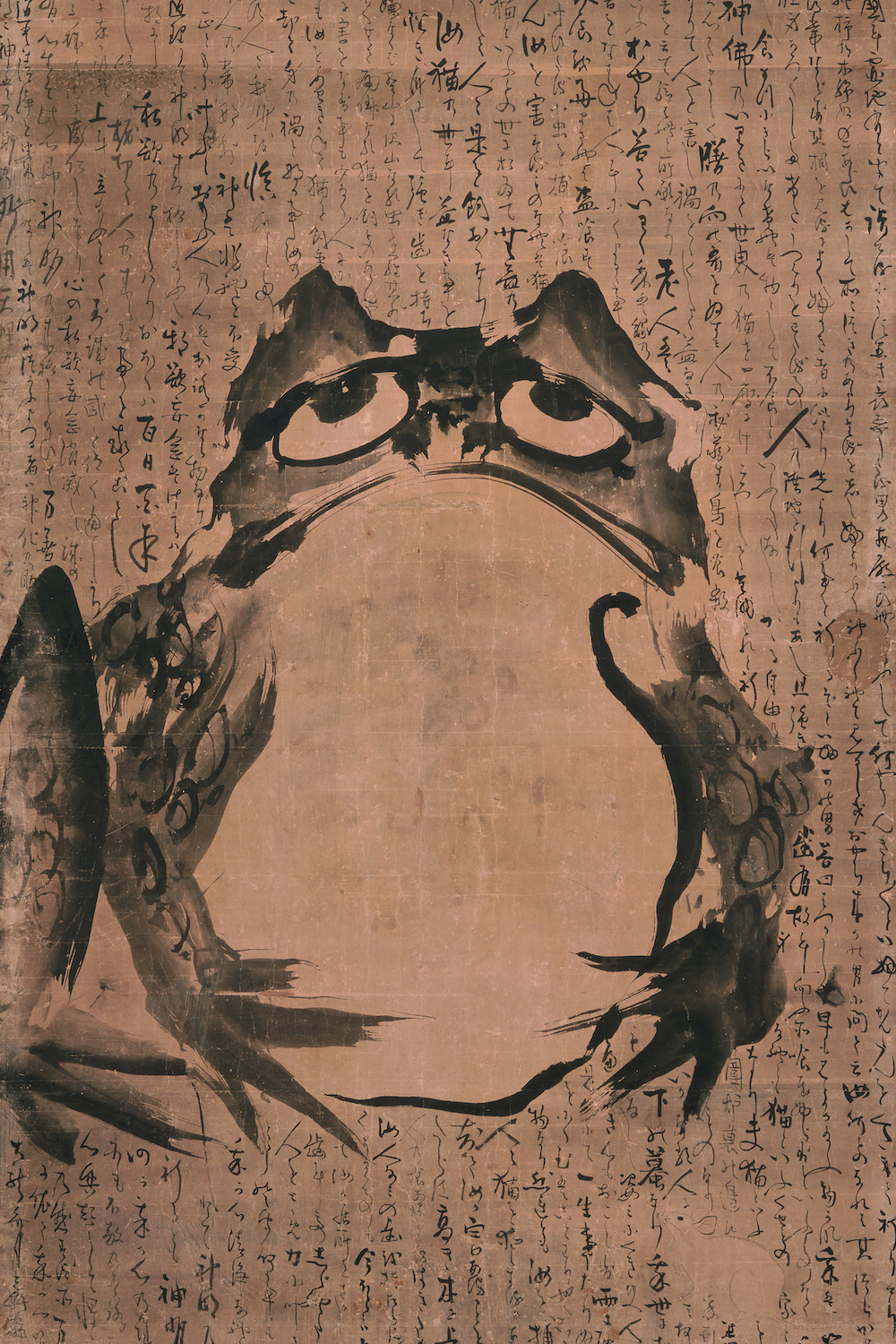
Toad and Mouse, late 18th – early 19th century Getsuju. Buy the print.
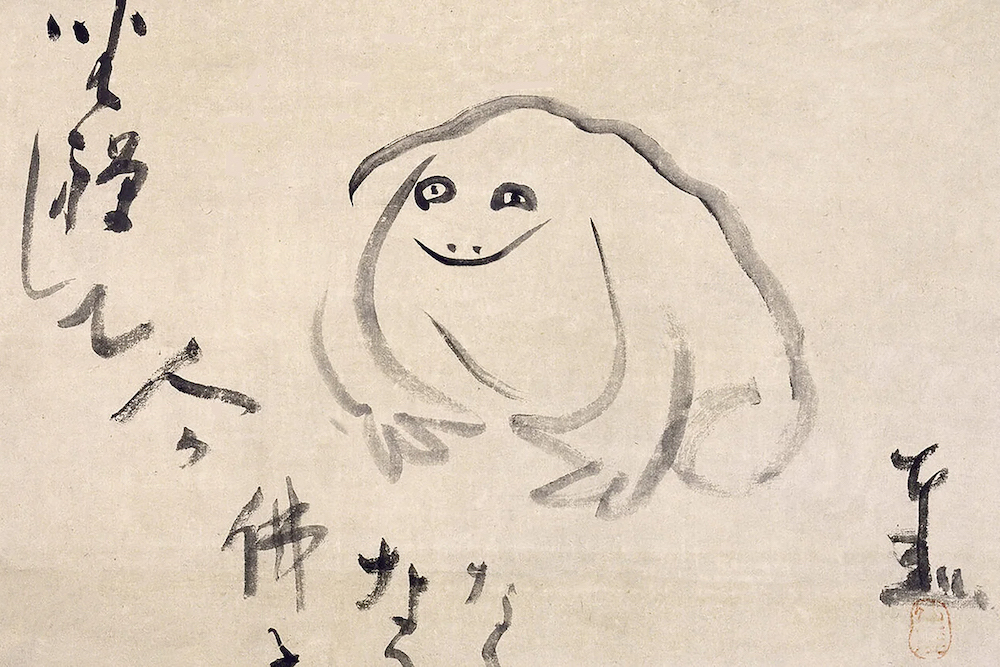
The Meditating Frog is a painting by the Japanese monk Sengai Gibon (1750–1837 CE), Edo period. Buy the print.

Fashionable Battle of Frogs- II Kawanabe Kyōsai, 1864. Buy the print.
Buy Japanese frog prints, t-shirts and more at the shop here.
Would you like to support Flashbak?
Please consider making a donation to our site. We don't want to rely on ads to bring you the best of visual culture. You can also support us by signing up to our Mailing List. And you can also follow us on Facebook, Instagram and Twitter. For great art and culture delivered to your door, visit our shop.
